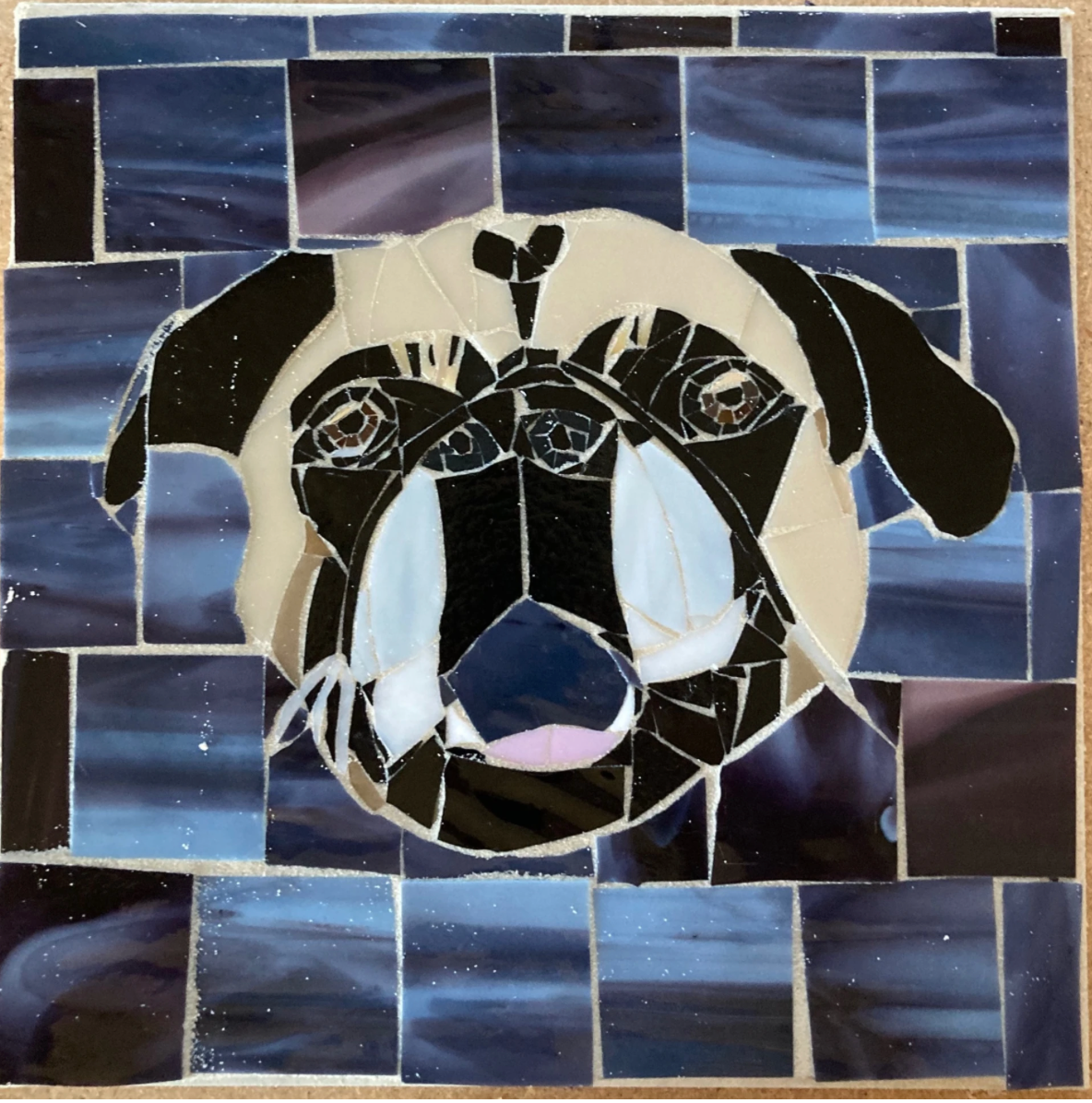One of my favorite principles is the law of parsimony, aka Occam’s Razor. It states that when given two explanations for something, the simpler explanation is preferred. I appreciate it because I so rarely practice it.
Way back in October I was working on a mosaic that I was getting paid for. I wanted to make sure the recipients got what they paid for, so I kept adding more and more detail, thinking it would make the face better.
Instead, it just made the face bigger and blobbier.
I asked a friend to take a look. Maybe my perfectionism was tricking me into believing the face was worse than it really was, but not so much. She confirmed that it was … globby.
I kept trying to figure out how to salvage it. I had at least 15 hours of time into the project. I believed I HAD to make this work. Starting over was too daunting to even contemplate. I went to bed that night demoralized and overwhelmed. I spent a fitful night tossing and turning, trying to convince myself that the mosaic would turn out ok.
In the morning, it did not look better.
I realized that maybe I’d just been working too closely. Maybe it would look better from a distance, so I moved the unfinished mosaic to a different part of my office, and I hung the photo next to it so that I could compare the two.
Within seconds I saw what wasn’t working: By adding so much detail, I’d lost the overall outline and shape. The “cool” glass that was difficult to cut had created a mishmash of black globs rather than a cohesive outline.
I breathed a sigh of relief: I knew what was wrong. And I knew how to fix it. I needed to simplify the whole thing. Stick to basics.
It also meant I had to start the whole thing over.
I pitched the whole thing in the trash—without any tears.
While it was the worst possible outcome, it had taught me so much more about what works and doesn’t work. By seeing the project as it actually was—not trying to fool myself that it looked ok—I was able to fix it.
But in order to see what wasn’t working, I had to step away from it. Literally, I had to move.
We do this kind of thing all the time in life. When we are close to something, we don’t have perspective. In the heat of the moment. In the weeds of a problem. In the 249th row of some spreadsheet. We quite literally do not have perspective when we are looking at the details. We have to take a step back to get a sense of the whole picture.
My lessons were many…
-
Simplify. Ask where you can make the project simpler.
-
See things as they really are. What are the facts? When you’re rationalizing that something will work that doesn’t feel right, sleep on it.
-
Step away from the problem/issue to gain perspective. Literally, move physically to a new location, even if that means moving across the room. Or, change your tools, e.g., from looking at a computer screen to using a piece of paper or whiteboard.

